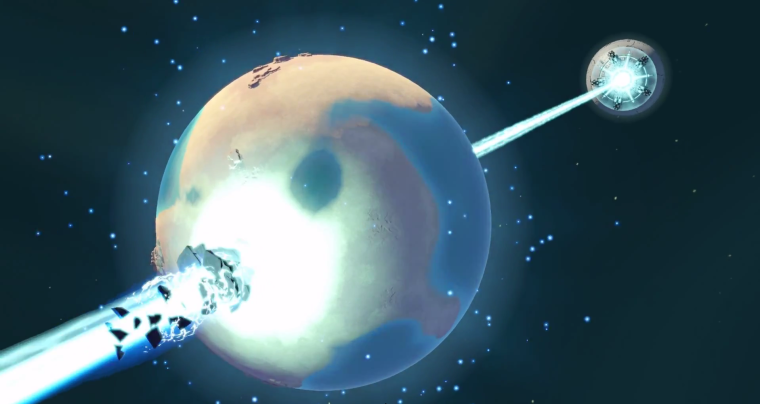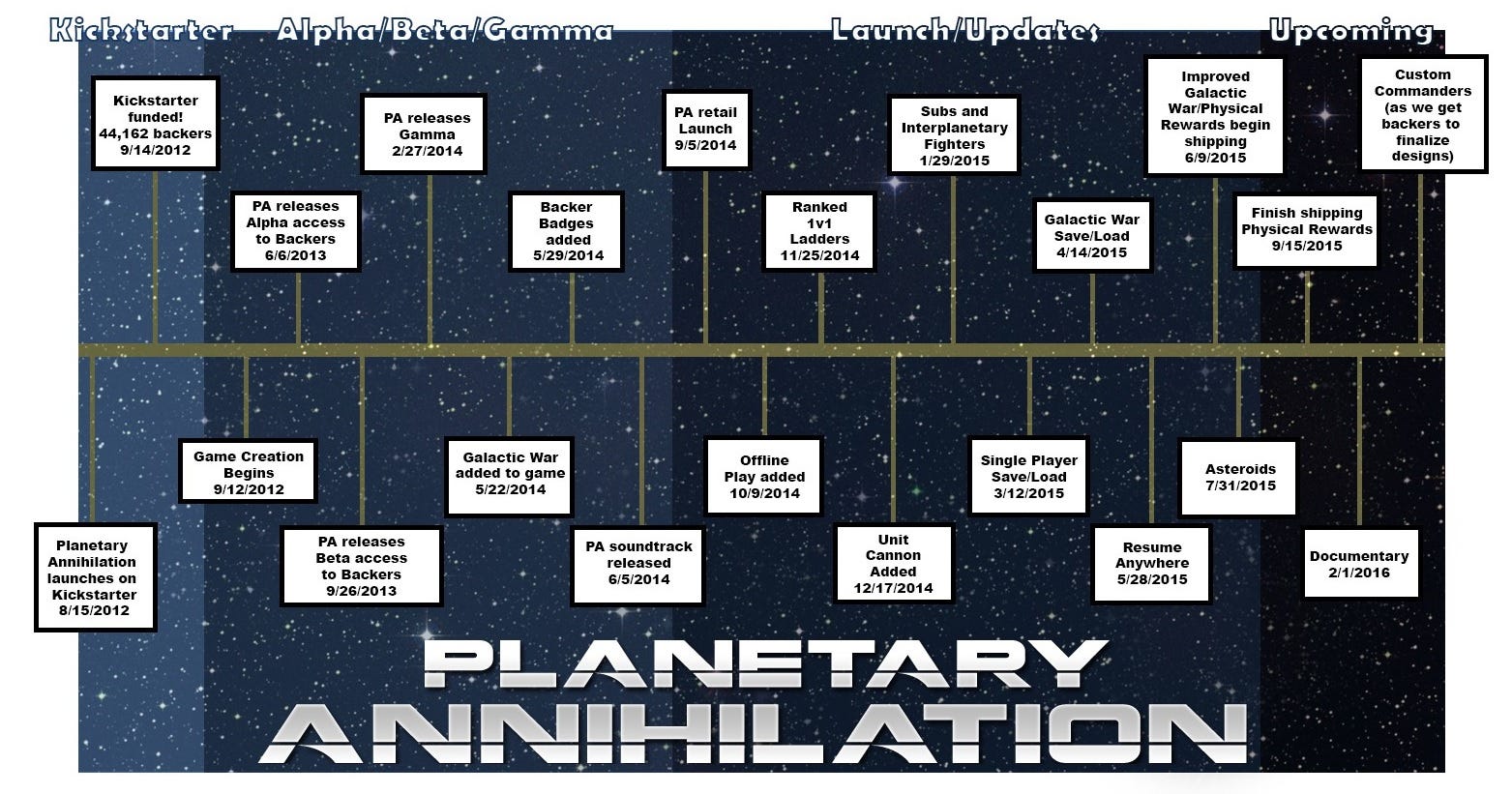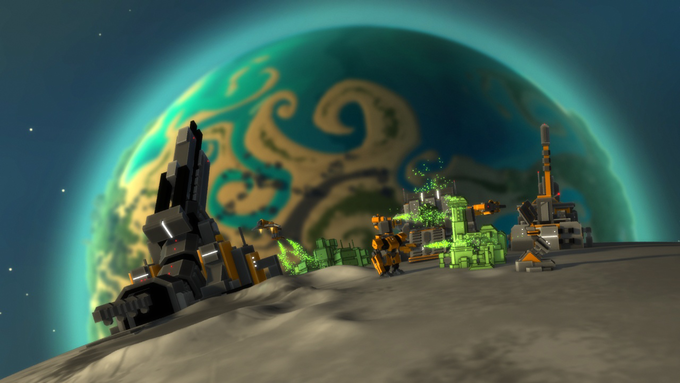- Joined
- Jan 28, 2011
- Messages
- 97,445
















Planetary Annihilation Postmortem: http://gamasutra.com/blogs/JohnCome...Annihilation_The_Journey_of_a_Kickstarter.php
Planetary Annihilation: The Journey of a Kickstarter
The year is 2012, we at Uber Entertainment were looking for a new source of revenue for building our next game. Jon Mavor, our founder and CTO, had been burning to make another Real Time Strategy (RTS) game in the Total Annihilation (TA) sub-genre. He, myself, and several others had shipped Supreme Commanderfive years prior. Steve Thompson, another former TA developer, agreed that the market would be great for this type of game. Steve also loved blowing up robots, so win-win. They believed we could pull off technical feats that hadn’t been done before in the world of RTS games. Planetary Annihilation (PA) was the result of that wish.
Why Kickstarter?
Uber has always tried to stay as independent as possible, avoiding publisher involvement where we could. In 2012 when the industry was witnessing the first $1+ million Kickstarter campaigns. We decided it was our turn to take that plunge shortly after Double Fine Adventure, which kicked off the crowdfunding craze. We believed that Kickstarter gave us the creative freedom to pitch a game and have complete control over it. In retrospect that was a bit naive. We learned plenty about taking money in such a public way, both positive and negative.
The original plan was to ask for $900,000 to get the game started. We could ship something with that kind of funding, if we had to. For perception reasons, we avoided setting the goal at a million dollars. Fans might not back the project if the goal seemed unattainable. The magical barrier of six zeros was something we hoped we would cross later in the pledge drive, if we funded at all. It was a scary and stressful time. Our previous title, Super MNC, was a critical success but was not bringing in enough revenue to continue running the studio. The future of the company was at stake and we were betting on an new funding model no one had yet truly figured out.
We believed that the best way to fund a Kickstarter is having nostalgia, a high quality pitch, and a good team behind it. Naming the game with the word “Annihilation” was key to the nostalgia factor. We spent approximately two months building the pitch video, writing the copy, and setting up the web site. Every detail crafted to entice fans to help us fund this game.
The Planetary Annihilation Kickstarter video. This video was worth $2,229,344!
The Kickstarter Pledge Drive
Doing a Kickstarter is a full time job for several people during the time the pledge drive is active. The project leads, Jon and Steve, focused on constant updates, answering questions, and getting the word out. The rest of the team would help out with update videos, live streams, and sometimes write posts. Everyone was involved at some point because it meant having a future for the company.
On August 29th, 2012, Planetary Annihilation, reached its $900,000 funding goal. Success! The company would continue and we could start building the game.
For the next two weeks we continued to work on updates and defining stretch goals to keep the funding coming. The more goals we announced, the more money we would bring in, the bigger a game we would commit to building. Every week after the funding level just kept going up. We didn’t realize at the time that a large amount of funding comes in right as a pledge drive is about to end. Two days before we finished we were sitting in our office saying ‘We should come up with stretch goals for $2 and $2.1 million. Doesn’t matter what it is, we’ll never get there.’ … And then we got there!
September 14th, 2012 the pledge process ended with $2,229,344 pledged from 44,162 backers. After the ~10% you lose for various reasons, we brought in just over $1.9 million. It was an amazing time at Uber Entertainment. The smiles you see from Uberites in the videos were genuine. The ride we had been on for a month ended in a live stream party celebrating our success with our fans. It was magical time.
Then reality set in … we have to build this game!
Path to Alpha
We had already started on building the engine the moment we passed the initial funding level. Part of the big sell for PA was the ability to smash a planet into each other. We had to build an engine that was capable of making that happen. We also wanted to add in a ‘ChronoCam’ feature. ChronoCam was the ability to rewind time on the fly. We had to architect the engine to handle these feats, nothing off the shelf would have worked.
Over the next 10 months Uber doubled in size to handle the work load of this new engine. The content team that worked on Super MNC and Toy Rush moved over to PA once the basic framework existed. It was all typical pre-alpha for game development and we were humming right along. Jon and others spent a lot of time keeping the backers and fans in the loop through our forums. Their constant input and enthusiasm was invaluable. We felt a real connection to our community and could feel their excitement every day in the office.
Alpha
On June 6, 2013 we released the Alpha for Planetary Annihilation on Steam’s new service called Early Access. We found ourselves, once again, on the forefront to a new funding mechanism. This is the point where we learned our first big Kickstarter lesson. You can find yourself in a no win situation. We needed to start selling the game to bring in revenue. Games are expensive to build; PA’s total development cost was four times more than what we brought in via Kickstarter.
We started selling PA on Early Access for $90. The Kickstarter backers who pledged to get into the alpha gave us $90. We gave backers two weeks to play the alpha before we let anyone else in. It only made sense to us to charge new players the same. It would be a disservice to our backers, in our eyes, to undercut them. This did not sit well with some fans. Large 1000+ response threads on the Steam forums appeared. Posts bashed us for our greed and our disconnected view of games. Even some popular YouTube personalities had strong negative responses. It was a tough call. Do we upset our Kickstarter backers who believed in us or upset the new players wanting in? Community management and customer service became a full time job. We needed to hire to cover this new wrinkle. Alpha was bitter sweet in that it brought in revenue to keep us rolling but left a PR stain that would follow us around.
Over the next few months we dropped the price on a trajectory towards the beta price of $60. Which was the same pledge level as the Kickstarter backers. We still believed that it was a disservice to undercut them.
Beta
Over the next year we found a good cadence for Beta releases. We would work on a big feature for a month or two and release it with a Steam promotion. We continued to get feedback from players about the game, what they loved, and what they hated about it. We used that feedback to help govern our road map and our feature set. During the ten months we were in beta we released several major updates as we got the game ready for release.
In what seemed to become our tradition, we tried another new funding style. With a publishing partner, we released a boxed version of the early access game in Europe. This was met with more negativity from the most vocal fans. It was not clear how it sold. Nor was it clear that early access had anything to do with its sales. In 2014 there were not a lot of PC gamers that still bought boxed copies of games.
In June of 2014, Planetary Annihilation was in the Steam summer sale. Uber had the best month of its 6 year existence. Players seemed to love the game! PA had ‘all its fingers and toes’ by this point. That sale gave us the feeling that the game was going to be a hit. We truly believed we were on a trajectory to ship in the second half of the year. We absolutely wanted our backers to be proud of us and at this point, many were. We felt like that goal was in reach.

Launch
An interesting thing that happens when you change a title from ‘beta’ to ‘released’. That interesting thing happened September 5, 2014. The game could be exactly the same from one day to the next but the human response is extremely different. One day fans are full of hope that their favorite feature will make it in the game. The next day they are outraged that not every single one of those confirmed features made it in.
I have to say this about my 14 years of making games:
The released version of Planetary Annihilation is, by far, the closest to its original vision of any game I have ever worked on.
Go back and watch the Kickstarter video and then look at the game. Games always change a ton from vision to final product. PA changed relatively little.
Crowdfunding gives you creative control at the beginning because you get to pitch what you want. Crowdfunding removes your creative control at the end because you can’t edit anything. Backers have their heart set on promises made in your original pitch. They want that feature even if it no longer fits the game you’re making. Ideas that sound good on paper but fall down in implementation have to exist. You can’t cutanything.
I’ll admit, we were a bit naive thinking everyone would understand game development. They’d understand 1.0 was just a development phase, right? We’d get to other things we talked about in an update. Things like offline servers and geothermal plants on lava planets. They’d understand that… right?
An explosion of community outrage happened that took us all by surprise. It rippled out from forums to gaming websites to YouTube. To us, this was a version 1.0. We all have decades of doing this. Why was this causing such an outrage? Everything that was cut or postponed was just the typical byproduct of development. Our supporters didn’t see it that way.
Project Timeline as of Summer 2015
Our goal from that moment was to make our backers and fans happy with the game. We spent the next year updating Planetary Annihilation. We worked to get in all the major features our fans asked for. By the summer of 2015, I believe we did that. Although I’m sure there are still fans out there that will disagree with me.
Collateral Damage
The outrage followed Uber for some time. On October 3, 2014 the other team at Uber put up a Kickstarter for a new ‘Cthulhu vs SkyNet’ RTS called “Human Resources”. The response to the concept and the art style was positive. Unhappy Planetary Annihilation fans descended on comments and forums blasting us for how we handled our last project. Two weeks later we shut down the project and were forced to reduce staff.
Building a project in front of so many people has another interesting side effect. Players come in early, form an opinion and don’t change it. We’re still seeing comments and tweets about PA being $90, even if it hasn’t been $90 in over two and half years. Tweets go out about the game missing features that released over a year ago.
Community management is not to be underestimated in a large Kickstarter project. It affects everything you do as a company, not just the one project.

Titans
In early 2015 a small team broke off of PA to work on an expansion. Planetary Annihilation: Titans would be everything that the fans wanted out of PA that wasn’t promised in the Kickstarter. We added huge Titan units, new maps, new orbital game play, a new game mode, and new combat units. We released that update as a stand-alone expansion on August 18, 2015.
Making Titans stand-alone that included the original PA solved various logistical problems. We want to make sure someone who just bought Titans could jump right in and play. Including PA in Titans enabled that.
We gave Titans to every single one of our original Kickstarter backers for free. It was our way of saying ‘Thank you’ to everyone who supported us. Everyone else who owned PA got Titans for a big discount that continues to this day.
Kickstarter backers were glowing in their response. It seemed like we had learned something about treating them well! But yet, some vocal fans that bought into the Early Access version were not so happy. Even though they could get Titans for less than $15, they felt like they should get it for free. Which we would love to do, but there is the matter of ‘keeping the lights on’.
Pledge Rewards
We offered a lot in the pledge tiers hoping to get as many backers as we could. After all, it was to keep the company running. The physical rewards became a daunting task. Miniatures, boxed copies, large statues, custom commanders, art books, posters, t-shirts and USB drives all had to be designed, manufactured, and shipped.
The cost of goods, packing, and shipping was a non-trivial piece of the Kickstarter funds. The promised ‘Custom Commanders’ for the $1,000 backers cost well more than the pledge amount. We underestimated these costs and the time and effort it was going to take to fulfill it all. The full Uber team even spent two days signing over 5,300 items for the pledge rewards.
As of this writing we are still working on getting rewards out to backers. Some have gone out and have come back, some larger items aren’t quite ready for shipping, and some questionnaires are still trickling in.

Key learnings
Final Thoughts
- Nostalgia, quality pitch, and a proven team seem to be the keys to a successful Kickstarter pitch.
- The pledge period is a full time job for several people.
- Make sure the costs of stretch goals are covered in the funding level.
- Creative freedom on a crowdfunded project exists at the beginning but is removed at the end.
- Do not underestimate the costs of rewards. Physical products and special rewards take time and money. Plan for 10–15% of your money to go towards pledge rewards, maybe even more depending on what you offer.
- Community involvement can be your best tool to sell or sink your project. Make sure it’s someone’s full time job to manage your community.
- The general public doesn’t understand what it takes to make a game. Do not expect them to learn it.
- You will lose out on about 10% of the money pledged. 5% goes to Kickstarter. 2–5% goes to payment processing and uncollected pledges.
- Just like game development, control the scope of what you promise in the campaign.
- The funding level has to be carefully considered. You can’t ask for too much or too little. Good luck with that.
- Kickstarter’s 5% take is far better than the 30% on most other platforms. Sell as many copies as you can during your pledge drive.
- Alpha players want to be treated like backers, but not the other way around.
- Release an update every 2–3 months on Steam along side a promotion. That kind of cadence works well to keep your revenue up.
The Planetary Annihilation Kickstarter project was one heck of a roller coaster. It has given me the highest high and the lowest low of my career. It allowed us to make an amazing game right in front of the fans. It taught us a lot and gave the scars to prove it.
Would we do it all over again? Absolutely.
Will we do another? Maybe.








